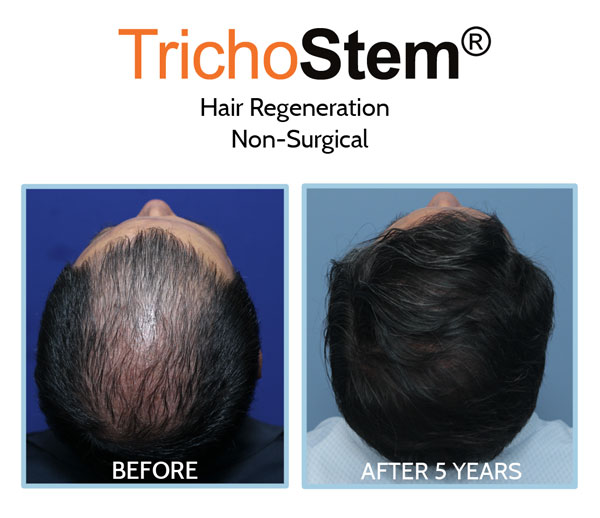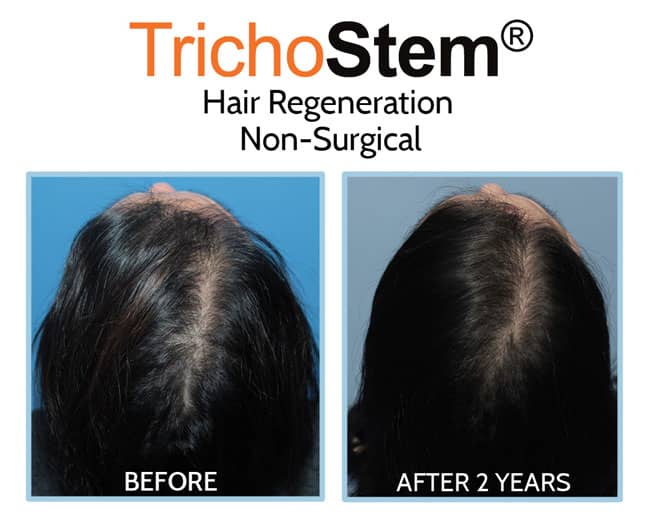PRP and Acell for Hair Loss: Why Results Can Differ

PRP and ACell injection treatments, when performed effectively, can significantly increase hair density and coverage in men and women who suffer from genetic pattern hair loss. People who have received multiple treatments with PRP or platelet-rich plasma alone and have not seen substantial improvement after many sessions often look for PRP and ACell treatment. Oftentimes there are improvements seen in hair growth after PRP injection, but the growth is typically not sustained for the long-term
Furthermore, many people are looking for alternatives to surgical hair transplantation, as well as strategies to improve their results after undergoing hair transplant surgery. With PRP + ACell, the key ingredients are spelled out in a generic name, there is often an assumption that the formulation, execution, and results of PRP and ACell treatments are the same between doctors. In reality, results, formulation, and treatment protocols are not universal.
I’ll discuss how PRP and ACell treatments differ amongst doctors, and how you can decide which treatment is best suited for your hair loss situation.
Our History with ACell and PRP for Hair Loss
I am one of the original pioneers of PRP and ACell therapy. This began when I first used ACell’s extracellular matrix (ECM) to promote healing during hair transplant surgery. The term “ACell” refers to the corporation that manufactures extracellular matrix, also known as ECM. The extracellular matrix, or ECM, is an advanced wound healing substance derived from pig bladder due to its unique healing and regenerative properties. Although this is stem cell technology, the substance is not composed of stem cells.


The extracellular matrix substance really causes your body’s adult stem cells to behave in ways that greatly boost wound healing. I gained experience with this material and its behavior by utilizing it for incisions during facelift surgery, and other cosmetic and reconstructive treatments. When I used this material for hair transplant surgery, I saw that not only did the hair grafts heal faster, but the native thinning hair also became thicker.
The hair thickening effect was seen more than a year after surgery. This observation encouraged me to focus on generating appropriate ACell concentrations with PRP, as well as delivery modalities, in order to potentially build a standalone therapy to help men and women with genetic hair loss without surgery. Since there was no prior information in this area, I spent years inventing and refining the technique to ensure maximum effectiveness, consistent results, and, most importantly, the greatest benefit for the longest amount of time with the fewest number of sessions.
ACell + PRP Success
Despite many years of skepticism and frequent dismissal of the concept by many members of the dermatology, plastic surgery, and hair restoration surgery communities, the success of our treatment, TrichoStem® Hair Regeneration, as a standalone procedure since I began in 2011, could not be ignored, and it has become so well known that patients have come to us from all over the world for male, and female pattern hair loss treatment.
The increased scalp coverage we see is due to the reactivation of hair follicles that are viable but not growing hair, as well as the thickening of thinning hair. Our success in transforming the way hair loss is treated has led to the same doctors who were skeptical of PRP and ACell now offering their own limited single formulation, requiring their patients to come in every month to every three months for scalp injections of PRP, or PRP with ACELL.
So, if you are having hair loss, how do you first assess whether PRP, or PRP with ACell is right for you, and if so, which approach will be the most effective?


Personalized Treatment for Hair Loss
Since I began working with PRP and ACell, I have looked at unique factors in each patient I have treated, as well as how they responded to the treatment dose, and methods that I used for them. I examined each patient and took microscopic, and high-resolution digital photographs every three to six months for at least five years. Based on these insights, I recognized the importance of developing tailored treatment regimens. For example, a young male with severe hair loss requires a different treatment plan than a middle-aged woman with slow, progressive hair thinning.
I see many people who are experiencing hair loss and have received treatment in a shotgun approach, regardless of their age, gender, or level of hair loss. Unfortunately, this causes persons being treated for hair loss to be disappointed and feel that this therapy category just “doesn’t work”.
In our practice, we spend a significant amount of time looking at our patients. We thoroughly examine each patient’s medical history, as well as hormone concerns, medications, and other variables, to determine whether he or she is a candidate for PRP and ACell, or TrichoStem® Hair Regeneration, as our technique is known. I can attest from experience that one strategy to hair loss treatment cannot be used for all patients.
After evaluating a patient and diagnosing them with androgenetic alopecia/ genetic pattern hair loss, I recommend a treatment approach. For example, if you are a 40-year-old male who began losing hair in your early thirties with moderate to advanced hair loss, you may be a candidate for a two-year treatment plan that includes two treatments spaced around 18 months apart.


The effects of two treatments, as well as additional therapy, are anticipated to result in improvements that will last three to five years. For the majority of female pattern hair loss patients, we have achieved equivalent and generally longer-lasting results.
I’m pleased to see the continuous expansion and recognition of PRP and ACell as treatments for hair loss. However, I must emphasize that genetic pattern hair loss is a genetic condition that is managed rather than cured. In many ways, I see parallels between the marketing of PRP and ACell by doctors with little to no prior hair loss treatment experience, such as having performed hair transplant surgery, and the aggressive marketing of devices for skin tightening or fat reduction that are used on people who are not good candidates for these procedures.
I see this as part of a larger trend known as Cosmetic Medical Retailing. In Cosmetic Medical Retailing, the practitioner is primarily a salesperson who is not interested in establishing a long-term doctor-patient connection. My responsibility as a doctor is to first diagnose, manage, and advocate for my patients’ best interests.
In Cosmetic Medical Retailing, the patient is viewed as a one-time transaction, with the practitioner unconcerned with the long-term repercussions of any therapy sold. Even worse, unethical medical retail operations frequently steal before and after images. We are regularly warned about tactics that steal our photographs and misrepresent them as their own.
I’ve discovered that many people who try PRP or ACell + PRP in clinics where treatments are scheduled monthly, or many times per year cease after three to four treatments, which makes sense. Having many scalp injections every month, or every three months can be rather unpleasant.
More significantly, why do you need so many injection sessions? When you think about it, the cost of these injections build up over time, and with no major long-term effect, these injection treatments become financially and logistically unsustainable, essentially a recipe for failure.


Trichostem Hair® Regeneration Results
I can say from my many years of experience with ACell with PRP, which began in 2011, that a correct diagnosis with a specific treatment plan limited to no more than two treatment sessions results in an expected average duration of three to five years. This appears to be the most effective technique at this time, and it serves as the foundation for our success with TrichoStem® Hair Regeneration. Since 2011, I’ve been helping men and women all around the world with genetic hair loss improve their appearance.
TrichoStem® Hair Regeneration is a system that utilizes a variety of customized formulations, administration modalities, and treatment programs. As more doctors begin to give PRP+ACell, the problem is for patients to make informed decisions about which method is best for their requirements.
I am open with my patients about my understanding gained through my experience establishing our system. I make it plain to all of my patients that hair loss is genetically determined and progressive.
During a consultation, you may expect the doctor to address your questions immediately and honestly. Be skeptical of results that seem too good to be true, and avoid unclear answers about what to expect after therapy. In my practice, I present each patient with a treatment plan, and a detailed schedule of treatments required to achieve enhanced scalp coverage over a three to five-year period.
I hope you found this information helpful.

Hair Loss Treatment Manhattan, NYC; Long Island, New York; and Vienna Virginia
Dr. Amiya Prasad is a Board-certified cosmetic surgeon, and a Fellowship-trained oculofacial plastic surgeon. He’s been in practice in Manhattan, New York City; and Garden City, Long Island, New York for over 25 years. He’s actually one of the original pioneers of PRP+ACell treatment. To schedule a consultation, you can fill out the contact form below, and we’ll get back to you. You can also contact our offices at (212) 265-8877 in Manhattan, New York City; (516) 742-4636 in Garden City, Long Island; or (703) 356-1336 in Vienna, Virginia.

